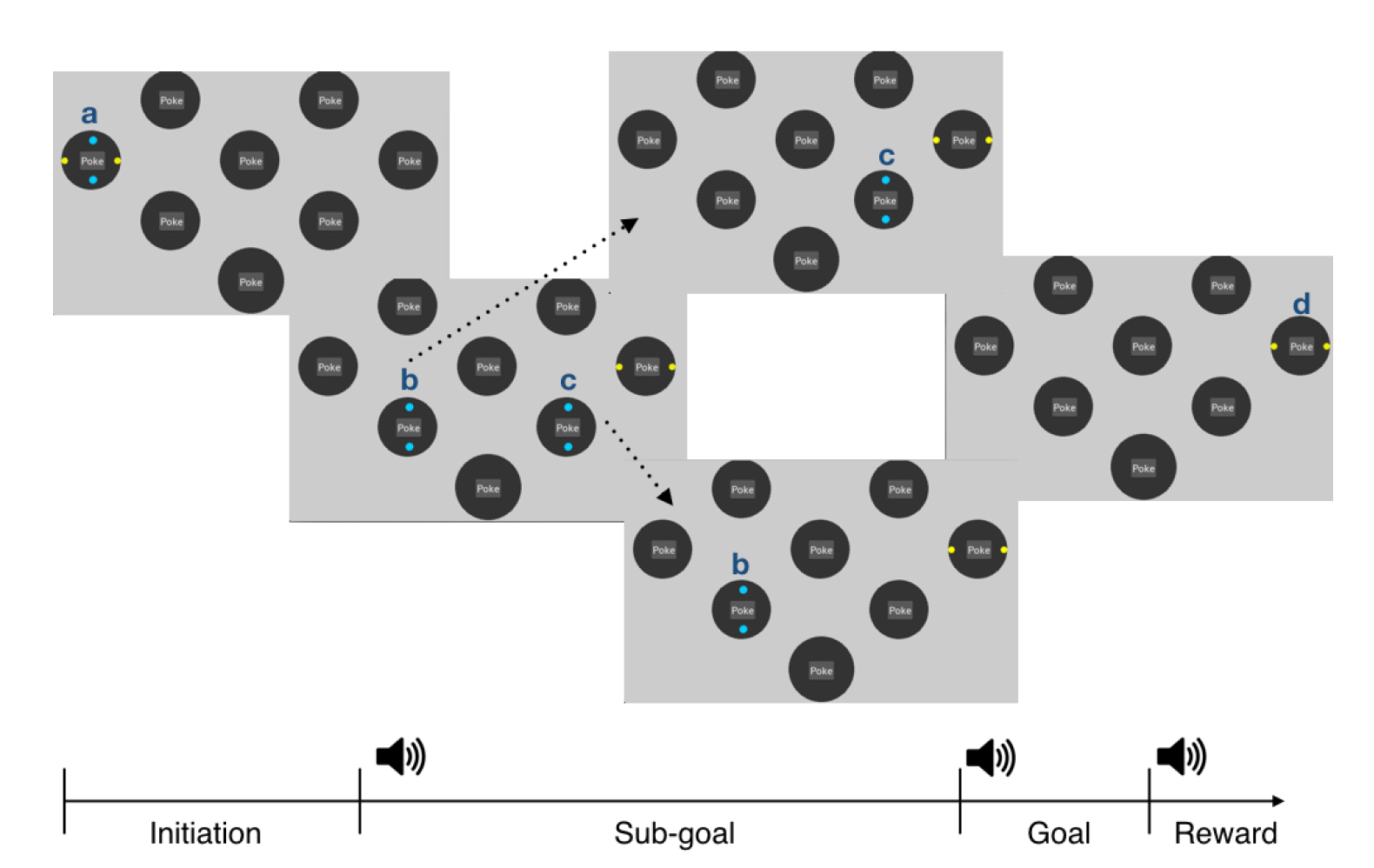Between-subject representational geometry in the rodent hippocampus
We developed a cross-subject (Procrustes) alignment method and showed that the hippocampal place cell activity of one subject can be predicted better than random from another subject, suggesting that hippocampal maps of different environments, though whose representations are supposedly independent from one to another, could be formed by a shared but still unknown mechanism.
 Learn more
Learn moreHierarchical reinforcement learning in rodents
The framework of hierarchical reinforcement learning (HRL) hypothesizes that a complex goal can be divided into sub-goals. Correspondingly, a long sequence of actions required to achieve a complex goal are chunked into sub-routines for sub-goal completion, which then can be reused in a different task. We designed a rodent version of travel salesman task to study how sequences of goal-directed actions are coordinated in the brain.
 Learn more
Learn more